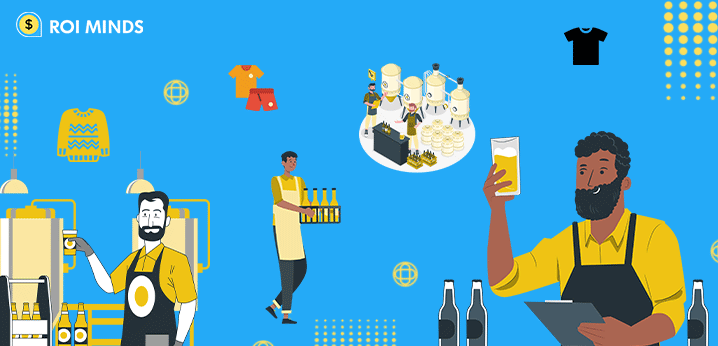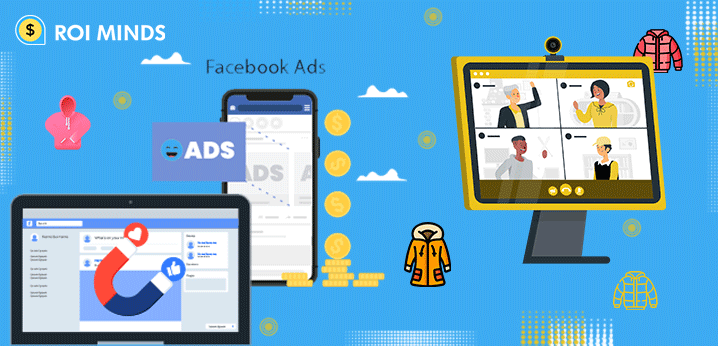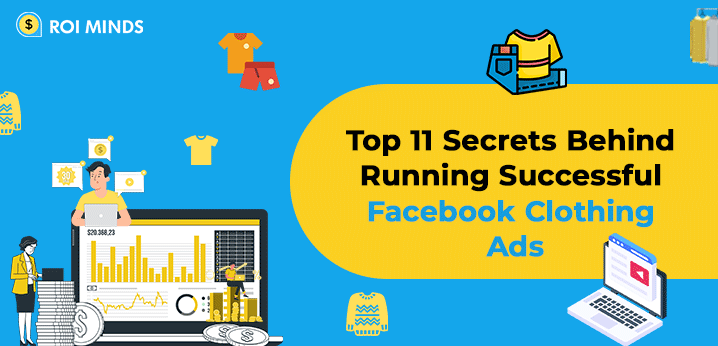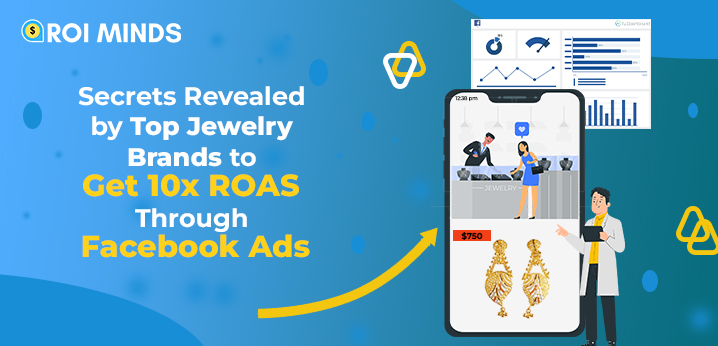Small- and medium-sized business owners can now advertise their brands and products to the proper customers on Facebook. A strong Facebook ad will go a long way toward increasing traffic, brand exposure, and sales. But occasionally, making a Facebook advertisement might be difficult. When creating an advertisement, there are numerous factors to take into account, including the location of the advertisement as well as its size, photos, composition, style, and fonts. How would you determine what is effective and what is not? Or what will distinguish your company or your product?
Take a look at our list of the top 11 Facebook clothing ads secrets whether you’re new to Facebook advertising or want to improve your ads.
1. Understand Your Targeted Audience
It’s tempting to write as though you’re speaking on stage at a conference when selling online. However, in order to be effective, you must write as though you are writing to just one person.
You must charm and persuade this person—your target—in order to win them over. You need to give this person and their demands all of your attention, just like you would if you were a face-to-face salesperson.
You must create content for your website that will appeal to all of your potential customers, and you probably have a variety of personalities. On Facebook, you can, however, directly target your audience. What does it look like to follow this Facebook Ads advice? Here is one instance. You can focus your advertising efforts on American women over 30 who are interested in fitness and well-being. After that, you can create advertising that is specifically aimed at that population.
2. Implement the Facebook Pixel
You don’t want to overlook this Facebook advertising advice. What precisely does Facebook Pixel mean? In order to track various conversion metrics back in 2015, advertisers had to place multiple pixel codes on their websites. Every new landing page for every new promotion required a new pixel, which was a workable approach in moderation but became increasingly burdensome as your ad strategy grew bigger and more intricate.
Lookalike audiences work best when combined with layered targeting, just like Custom Audiences. If you’re concerned that your lookalike crowd is unqualified or too big for your budget, for example, adding layered targeting to lookalike audiences is a very efficient technique to manage audience size. Additionally, you can manually boost audience size on Facebook using a sliding scale from 1 to 10.
So, building new audiences off of your initial, or “seed,” audience. By choosing this option, you have the chance to connect with fresh potential customers—customers that differ more from your original lookalike audience but are nonetheless similar enough to merit further investigation.
Setup a Proper Facebook Ad Funnel
You strive to increase brand recognition among your target audience at the top of the funnel (ToFu). This could entail making ads that briefly describe your items and advertising them to audiences that look like them, holding a referral competition, and publishing a range of content (such as blog posts, videos, infographics, and ebooks) in order to appeal to different audiences.
The center of the funnel is the next level of the Facebook sales funnel (MoFu). You mainly concentrate on lead generation and lead nurturing during this period.
You may respond to inquiries in the comments section of your clothing ads and posts, put out content that goes into greater detail about your items and has previously been successful, and execute retargeting efforts to convince clients of your unique selling proposition. A video ad for viewers who have already clicked on a blog post or other piece of content from your Facebook page might be part of such a campaign.
The bottom of the funnel, or final stage, of the Facebook sales funnel (BoFu). Your primary focus at this point should be on conversion, followed by retention. Therefore, the Facebook advertisements employed in this phase will be those that force your prospects to make purchases from you and later convert them into devoted clients.
To provide users with one last incentive to make a purchase or complete another action, these advertisements may include exclusive discounts and incentives, such as a free trial. Additionally, they ought to be extremely targeted to highlight goods that customers have already seen or similar goods based on previous purchases.
As the last phase in the Facebook sales funnels, you need to make sure that your clients continue to support your business.
For this reason, it’s essential to offer customers excellent customer service by employing best practices for customer care. This can guarantee that they’ll continue to be happy with the services offered to them.
Make an effort to ensure that you effectively resolve all of their issues.
3. Utilize Video Ads to Introduce New Collections
A very powerful kind of marketing is video advertising. They offer the chance to develop more innovative ad concepts and make more visually appealing advertising. You can interact with your audience using video commercials and inform them directly about the benefits of your company.

Facebook Watch, Facebook offers a fantastic platform for video advertisements. It gives your company access to one of the biggest audiences, with 1.25 billion monthly users. Therefore, you may reach more people, increase lead conversion rates, and increase revenues using Facebook video ads.
Facebook video advertisements can assist your business in achieving all of its marketing objectives. This is how:
- More Clicks – Video advertisements instantly draw viewers and pique their interest in the products. Therefore increasing the number of clicks on your video.
- Greater Engagement – They are more appealing on the surface. Ads can be made more interesting by using amazing graphics and effects.
- Higher Conversion Rates – You have a better chance of converting when clicks increase due to engagement. Increased page views and traffic increase conversions and increase sales.
It’s difficult to make a Facebook video ad that effectively converts more and generates more views. To make that impression, you’ll need to make relevant and fashionable fashion video advertisements.
4. Show User-Generated Content
User-Generated Content, or UGC, is any distinctive, brand-specific content that a brand’s customers and supporters post on social media websites or other platforms, such as photographs, videos, reviews with text and captions, unboxing videos, and podcasts.
Consumers today pay special attention to the experiences that other members of the community share online, making the conversion of user-generated content into fashion Facebook advertising the simplest way to establish trust and authority for your company.
User-generated content, in other words, acts as the modern-day version of word-of-mouth and aids in making companies like yours stand out from competitors and draw in customers in a competitive market.
5. Promote New Collections
Businesses build collections as fashion trends evolve over time in an effort to appeal to consumers and stimulate their interest in their products. However, in today’s very competitive market, simply building a collection and uploading it to your website and social media channels won’t cut it.
You must promote your collection online if you want to grow brand recognition and revenue. The best aspect is that you don’t have to go crazy.
Making appealing Facebook ads to advertise your collection and grow your clothes business is simple. Always include a compelling call to action (CTA) that encourages readers to view your collection at the conclusion of each piece.
6. Highlight Product Qualities
The new alternative must meet one of three criteria before a consumer makes a purchase: is it better, faster, or less expensive? As a result, highlighting the benefits of your clothes above that of your competitors encourages potential customers to switch.

Create Facebook ads for clothing that highlight its benefits, such as more comfort and style, as well as ways to deal with problems like creases and wrinkles.
People won’t move to other brands or try anything new if there isn’t a strong incentive or convincing reason. As a result, your marketing must emphasize how your clothing performs better than things of comparable price in order to convince customers of its superiority.
7. Create A Challenge
Challenges are nothing new, but they have been employed extensively for hundreds of years since they are amusing and engaging, as well as stimulating the reward centers in our brains. You may capitalize on these consumer tendencies and design issues to gain momentum, strengthen brand recognition, and eventually raise revenue as a fashion business.
Put yourself in your audience’s shoes and consider what their goals are while creating a challenge. This will encourage engagement and ensure that they receive a valuable reward.
8. Keep Your Brand Consistent for Better Recall
Every fashion firm needs branding, which is much more than just cool logos and a website. It demonstrates your values and aids in developing a relatable brand identity, which in turn forges solid bonds with your clients and generates more leads and sales.
However, you must be consistent with your branding if you want to see long-term results. People begin to recognize and have greater faith in your fashion brand when you are consistent with your brand voice, values, and design aspects.
Because of their recognizable branding, consumers are familiar with companies like Nike, Louis Vuitton, and Chanel. After all, everyone has noticed the iconic Nike “swoosh” and Chanel “logo” on clothing and accessories.
Without consistent branding, shoppers won’t be able to tell your brands apart from competing ones, making it challenging to build brand awareness and loyalty.
9. Craft A Compelling Offer
Fashion advertisements frequently fail to convert because they don’t have a strong offer that differentiates them from competing businesses and compels viewers to make an immediate purchase.

Because their offer resembles those made by other fashion companies, the potential buyer scrolls past the advertisement without looking at it.
What, therefore, should you do to create an alluring offer that encourages potential clients to see and click on your Facebook ads for clothes?
To begin with, you must comprehend your target audience and their needs. When you are aware of what your target market wants, you can create an offer that appeals to them by highlighting the greatest qualities of your collection, providing exclusive deals, and including a compelling call to action.
To build excitement around your collections and make clients feel as though they would miss out on hot new designs if they don’t buy from you, you can also include a sense of scarcity and urgency in your offer.
10. Set up Facebook Retargeting Campaigns
Like the other retargeting strategies we’ve discussed, Facebook retargeting enables you to advertise to prospective clients and lost prospects. The technology behind Facebook uses information from many accounts to help you connect with the proper audience. To display your adverts on the appropriate news feeds, data, such as browsing behavior, is used.
You can benefit from Facebook’s enormous audience. Given how much information Facebook gathers about its users, there is a good chance that the leads you lost are seeing your advertisement. The website pulls relevant advertisements based on the user’s prior search history.
Retargeting can be divided into two categories: list-based and pixel-based. Depending on the objectives of your campaign, each operates a little differently and offers a distinct set of benefits.
Pixel-Based Retargeting
Retargeting using pixels allows you to show your content to any anonymous site visitor.
This kind of retargeting is most likely the most prevalent. When someone visits your website, a discrete piece of JavaScript (often known as a pixel) is added to their browser, effectively “cookie-d” it. That cookie alerts retargeting platforms to offer particular adverts depending on the particular pages they saw on your website when they leave it to browse the internet.
Pixel-based retargeting has the advantages of being behavior-based, specific to a certain page on your website, and timely (they can be retargeted very soon after leaving your site). The disadvantage of this approach is that fewer individuals are involved in the campaign at any given time because it depends entirely on how frequently visitors arrive at your website, browse specific pages, and leave. JavaScript implementation can be challenging or time-consuming for numerous website pages.
List-Based Retargeting
When you already have someone’s contact information in your database, list-based retargeting can be used.
For some varieties of retargeting ads, you can also use lists of your current connections. To accomplish this, upload a list of email addresses to a retargeting campaign (often on Facebook or Twitter), and the platform will recognize people on that network who have those email addresses and offer retargeting advertisements specifically to them.
List-based retargeting, however a little less popular than pixel-based retargeting, enables you to have extremely adjustable criteria for your advertising because it is based on more than just behavior; you get to choose which people get into certain lists.
On the other hand, it’s possible that someone on your list provided one email address while providing a different one to the social network; in that case, they won’t receive your adverts. Also, keep in mind that list-based retargeting is less automatic and timely than pixel-based retargeting because you are responsible for uploading and maintaining the list.
It’s possible that the first time you heard the phrase “retargeting,” it was in relation to remarketing. Even though the two are frequently confused with one another, they do differ.
11. Perform a Giveaway
Giveaways are one of the best methods to raise brand awareness, expand your email list, draw in new customers, and strengthen bonds with existing ones. The best thing is that because everyone appreciates the chance to win free stuff, this method is effective regardless of the size of your business.
More potential customers will connect with the article as a result, and some may even decide to purchase the collection before the giveaway.

Different Types of Facebook Clothing Ads
1. Facebook Canvas Ads
If you’ve seen Facebook Canvas Ads in action, it’s possible that you were drawn to the capabilities but put off by the production process’s apparent length. Canvas advertisements are a tangle of text, call-to-actions, still images, videos, and other interactive materials. Is the outcome worth the time spent?
Statistics say yes.
The average view time for a Canvas ad is an outstanding 31 seconds, and 53% of viewers who open it view at least half of it. When done effectively, Canvas advertising can be really engaging. The cause? You may truly immerse the consumer in your brand experience by combining multiple various ad kinds (carousel advertisements, video ads, single image ads, etc.) to create unequaled storytelling abilities.
Dragging and dropping material into the Facebook user interface and placing it in the appropriate locations is the creative process itself, which is also highly templated. Examples of templates are as follows: Sell Products (Best for eCommerce), Attract New Customers (Best for Customer Acquisition), and Promote Your Business (best for driving brand awareness).
The speed of the Canvas advertisements format is another key benefit. Your products and lead forms open directly within the Canvas, and they do so almost immediately. There is no need to reroute to those annoying, slowly-loading landing sites. Customers skim over a crucial step in the purchasing process.
2. Facebook Carousel Ads
The best way to display a variety of eCommerce items is with a single, swipe-able carousel ad (or different areas of the same item).
With carousel advertising, advertisers may display up to 10 images or videos with ten different CTAs in a single ad and connect to several landing pages from each panel of the carousel. They work well on both desktop and mobile devices and are available for the majority of Facebook clothing ad targets, so don’t feel as though you have no options if you’re not aiming for online sales.
3. Facebook GIF Ads
It stands to reason that a shorter film will be easier to encourage viewers to watch through to the end. It turns out that statistics support each other:
That falls squarely within the purview of the Graphics Interchange Format (GIF). When you can elicit the response you want to see in less than 10 seconds, why create a 5-minute video to communicate your brand story? GIFs occupy the area between photos and videos; they are essentially very brief videos that play continuously but don’t need as much time or effort to produce as videos do.
GIFs are simple to create and look excellent on mobile devices. You can quickly upload and crop videos into exportable GIFs using GIPHY’s GIF Maker—or a more sophisticated tool like Snagit.
Smooth and understated Facebook GIF advertising should nevertheless be compelling enough to draw in potential customers.
4. Facebook Video Ads
What makes Facebook video ads so fantastic? One is that consumers who watch videos are 1.81 times more likely to make a purchase than consumers who do not. Another is that putting up the system is as easy as setting up an image advertisement. Marketers may be put off from participating in the video ad market by the process of making the videos themselves, but even those advertisers may soon find themselves at a disadvantage. Over 500 million people watch videos on Facebook every day, and views of branded video content on the platform have climbed by 258% as of June 2017.
There is really no limit to how much storytelling you can pack into one Facebook video ad, which may last up to 240 minutes. Nevertheless, it could be preferable to keep it brief and add captions because, according to Facebook, captioned video advertising extends viewers’ time spent watching videos by an average of 12%.
Conclusion
With these pointers in hand, you can make fantastic Facebook ads that will help your company’s name and products gain the recognition they deserve.
Don’t worry if you ever feel overpowered by the sheer number of ad requirements, compositions, or even font options. Our skilled Facebook ad designers will produce great advertising while also saving you a ton of time, effort, and headaches.




